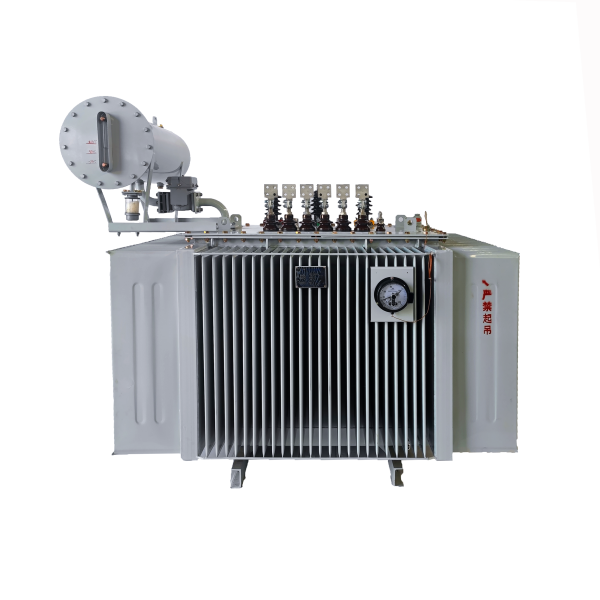How to Optimize Performance of Oil Immersed Hermetically Sealed Transformers
How to Optimize Performance of Oil Immersed Hermetically Sealed Transformers
Table of Contents
Introduction to Oil Immersed Hermetically Sealed Transformers
Understanding Transformer Technology
The Importance of Optimizing Transformer Performance
Key Factors Affecting Transformer Performance
Cooling System Efficiency
Insulation Materials Quality
Best Maintenance Pr
How to Optimize Performance of Oil Immersed Hermetically Sealed Transformers
Table of Contents
- Introduction to Oil Immersed Hermetically Sealed Transformers
- Understanding Transformer Technology
- The Importance of Optimizing Transformer Performance
- Key Factors Affecting Transformer Performance
- Best Maintenance Practices for Transformers
- Advanced Optimization Techniques
- Conclusion
- Frequently Asked Questions
Introduction to Oil Immersed Hermetically Sealed Transformers
Oil immersed hermetically sealed transformers play a crucial role in electrical power systems, ensuring efficient voltage transformation and distribution. These transformers are designed to operate under challenging conditions while minimizing energy losses. **Optimizing their performance** is vital for enhancing reliability, reducing operational costs, and extending their lifespan.
Understanding Transformer Technology
Transformers utilize electromagnetic induction to convert voltage levels, allowing for efficient power transmission. Oil immersion serves multiple purposes, including cooling and insulation. **Hermetic sealing** protects the transformer from environmental factors, preventing moisture ingress and enhancing operational integrity.
The Importance of Optimizing Transformer Performance
Improved performance in oil immersed hermetically sealed transformers leads to several benefits:
- **Reduced energy losses:** Optimized transformers operate more efficiently, minimizing energy wastage.
- **Extended lifespan:** Regular optimization and maintenance practices can significantly enhance the service life of transformers.
- **Reliability:** Well-maintained transformers offer greater reliability, reducing the risk of unplanned outages.
Key Factors Affecting Transformer Performance
Several factors influence the performance of oil immersed hermetically sealed transformers. Understanding these factors is essential for effective optimization.
Cooling System Efficiency
The cooling system is critical for maintaining optimal operating temperatures. Transformers generate heat during operation, and efficient cooling ensures that temperatures remain within safe limits. A **well-designed cooling system** utilizes oil circulation to dissipate heat effectively. Regular checks on coolant levels, flow rates, and heat exchanger performance are essential.
Insulation Materials Quality
The quality of insulation materials impacts both performance and safety. Poor-quality insulation can lead to premature failures, while high-quality materials enhance durability and heat resistance. Regular inspections and testing of insulation integrity are crucial components of a robust optimization strategy.
Best Maintenance Practices for Transformers
Effective maintenance practices are fundamental to optimizing transformer performance.
Routine Inspections and Monitoring
Conducting routine inspections allows for early detection of potential issues. Monitoring key parameters, such as temperature, pressure, and oil levels, helps in identifying deviations from normal operating conditions. **Regular inspections** should include visual assessments, electrical tests, and thermal imaging.
Importance of Oil Analysis
Oil analysis is a critical practice for maintaining transformer health. Regular sampling and testing of transformer oil can reveal insights into its condition and the presence of contaminants. Key tests include:
- **Dissolved Gas Analysis (DGA):** Detects gases produced due to insulation deterioration or arcing.
- **Furan Analysis:** Assesses insulation degradation.
- **Moisture Content Testing:** Evaluates the moisture level in oil.
Performing oil analysis routinely aids in preventive maintenance and helps in making informed decisions about transformer servicing.
Cleaning and Repairs
Keeping transformers clean and well-maintained reduces the likelihood of failures. Regular cleaning of external components and ensuring that there are no obstructions around the cooling system enhances efficiency. Repairing any identified issues promptly prevents further damage and ensures continued reliable operation.
Advanced Optimization Techniques
Beyond routine maintenance, employing advanced optimization techniques can significantly enhance transformer performance.
Real-Time Monitoring Systems
Implementing real-time monitoring systems allows for continuous assessment of transformer health. These systems utilize sensors to track various parameters, providing data for predictive maintenance. Real-time insights enable immediate corrective actions, minimizing downtime and enhancing operational efficiency.
Upgrading Components for Efficiency
Upgrading certain components can lead to substantial performance improvements. Considerations include:
- **Replacing aging insulators** with modern materials that offer better thermal performance.
- **Upgrading cooling systems** to more efficient designs or incorporating fans for enhanced airflow.
- **Installing smart grid technologies** that facilitate remote monitoring and control.
Investing in these upgrades can yield long-term savings and reliability.
Conclusion
Optimizing the performance of oil immersed hermetically sealed transformers is not just a matter of routine maintenance; it involves a comprehensive understanding of transformer technology, critical operational factors, and advanced techniques. By implementing best practices, conducting regular inspections, and leveraging modern monitoring technologies, organizations can enhance the reliability, efficiency, and longevity of their transformers.
Frequently Asked Questions
1. What are oil immersed hermetically sealed transformers?
Oil immersed hermetically sealed transformers are electrical devices used to change voltage levels in power systems. They are filled with oil for cooling and insulation and are sealed to prevent environmental contamination.
2. Why is it important to optimize transformer performance?
Optimizing transformer performance reduces energy losses, extends the lifespan of the equipment, and enhances operational reliability, ultimately leading to cost savings.
3. How often should I conduct inspections on my transformer?
Routine inspections should be conducted at least once a year, with more frequent checks during periods of heavy use or when environmental conditions change significantly.
4. What is oil analysis, and why is it important?
Oil analysis involves testing transformer oil to assess its condition and detect contaminants. It is crucial for understanding the health of the transformer and preventing failures.
5. Can upgrading components really improve transformer efficiency?
Yes, upgrading components such as insulation materials, cooling systems, and integrating smart technologies can significantly enhance the efficiency and reliability of transformers.
Key words:
Previous
Previous:
Recommended
How to Optimize Performance of Oil Immersed Hermetically Sealed Transformers
How to Optimize Performance of Oil Immersed Hermetically Sealed Transformers
Table of Contents
Introduction to Oil Immersed Hermetically Sealed Transformers
Understanding Transformer Technology
The Importance of Optimizing Transformer Performance
Key Factors Affecting Transformer Performance
Cooling System Efficiency
Insulation Materials Quality
Best Maintenance Pr







